The earth revolves around the sun in 365.24 days, marking a year in a human life. The alarm sounds at 6 a.m., alerting one that it’s time to wake up. There are the well-known idioms that “time flies” or “time stands still.” Time is money. Time is on your side. We organize our lives around time. But, what is it?
Inspired by the Hatter Planetarium show “How Did It Get So Late So Soon?: Gettysburgians Talk About Time,” we asked faculty and practitioners across disciplines what time means to them. At Gettysburg College, tapping into the power of the liberal arts means exploring questions from a variety of perspectives. The resulting answers can lead to agreement, disagreement, or, more often than not, more questions—especially when tackling as lofty a question as “what is time?”
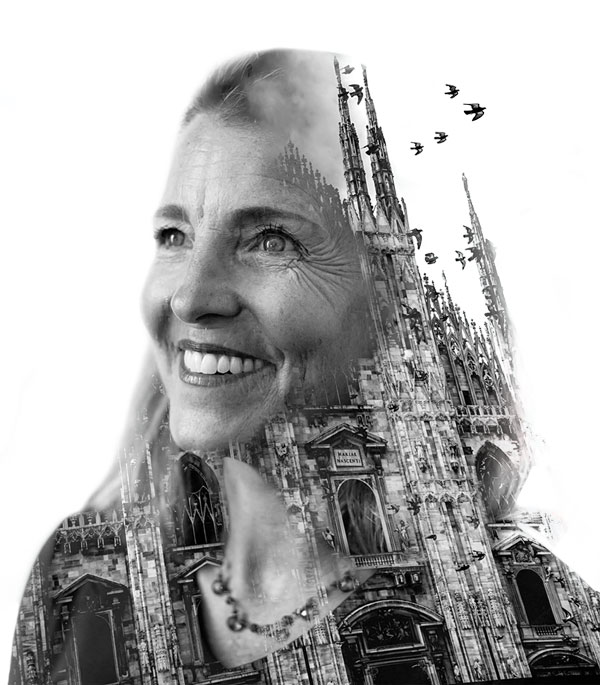
Time is Transcended
Kristin Largen, Religious and spiritual life associate dean, chaplain
Many religions perceive time as something that is in the hand of the divine. They teach that God stands over time and works through time to bring about a vision for the world. Many Christians believe that humans are limited by time, but God, who is omniscient and omnipotent, is not.
A main difference between the understandings of time in Western religions and Eastern religions is that, in the West, time is considered to be linear, and in the East, time is considered to be cyclical. For most religions, God or the gods are considered to be outside of time. That is, they don’t grow old and die. They are not restricted to being in one place at one time. They are not limited by time; they are eternal.
In Christianity, heaven is timeless. So, once people die, they are free from the bonds of time: there is no day and night, no aging, etc. In a system of reincarnation, sentient beings are continually born and reborn into lives of varying length until they are released from this cycle.
There are some intriguing parallels between the way religions think about time and how physics as a discipline understands time and the universe. It only enriches religious thinking when there is a conversation between theology and science around the universe and how creation is unfolding. We have things to learn from one another!
Mary Oliver is a deeply theological poet. Her poetry reflects a dazzling amazement at the presence of God and God’s love in the natural world. To me, this quote represents one way of understanding our call to life in the world. It is temporary—all life will die at some point. And yet, while we are here, we are called to live passionately and engage with the world, loving it fiercely in all its pieces and parts. Death is a natural part of our life and nothing to fear—so, when the time comes, we have to also open our hands and hearts and release what we love, trusting what comes next. Christians talk about moving from life into life, through death. Death is a change in our way of being, and in our relationality, but it doesn’t end it.
To live in this world you must be able to do three things: to love what is mortal; to hold it against your bones knowing your own life depends on it; and, when the time comes to let it go, to let it go.” – Mary Oliver
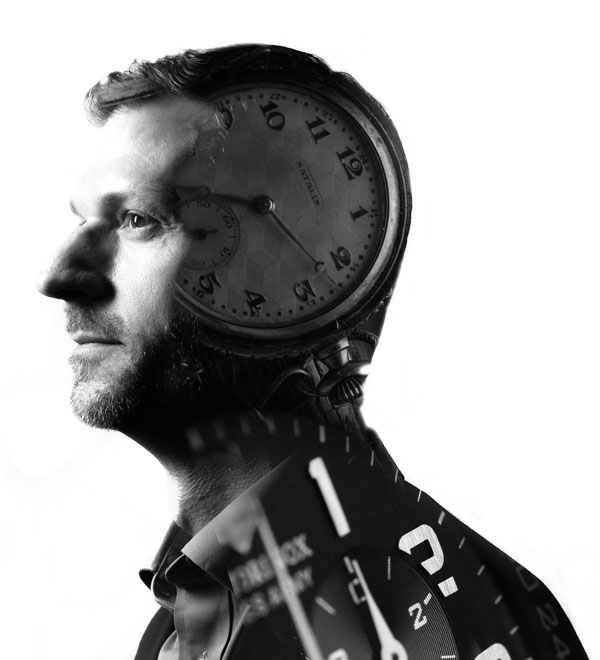
Time is Rhythmic
James M. Day, Music professor, director of the Sunderman Conservatory of Music
Music and time are intimately related. Although definitions and practices vary throughout the world, one element that unifies all music is that it exists as a temporal art form. As such, music requires no material substance. There are many methods to notating and documenting music—and we use a great diversity of instruments and devices, including our bodies, to perform. But music, as it is performed, exists solely as sound in time.
Understanding the relationship between music and time is essential to understanding the unique experience of both performer and listener. Justin London, a music and cognitive science professor at Carleton College, defined time as “the essential medium for music and musical performance, a nonspatial continuum of past, present, and future.” Others have argued that music is the art of time.
Memory also relates closely to time and music. Two fundamentals to musical form are repetition and contrast. Both depend on our memory to be effective. As we listen to music, we make sense of what we hear in the present by relating it to material we have already heard. As we become more familiar with certain musical patterns, we may even anticipate musical events before they occur. In this way, the listener experiences music as a continuum of past, present, and future—interpreting events as they occur and relating them to our memory of past events.
In addition, music may awaken within us other memories and associations. Upon hearing a familiar song, we might suddenly recall the specific circumstances of hearing it for the first time or feel nostalgia for bygone days. Sometimes it can be difficult to place why a piece of music moves us, but we can be certain of the emotions we feel as we listen.
Despite the fact that music is a nonspatial continuum of past, present, and future, music may stimulate a vast array of mental imagery and concepts. As a performer, I determine the timing of my articulations by visualizing musical phrases and forms as having physical dimensions. While tempo guides the placement of each beat with regularity, performing a phrase expressively requires a musician to lengthen and shorten the duration of certain notes to evoke a sense of shape and intensity. I often visualize the distance between beats or within a phrase as a physical distance to move across, much like dancers might visualize passage across a floor while maintaining constant awareness of location in a room as they move, adjusting movements to ensure a graceful and accurate gesture. However, as I visualize these musical durations as physical space, what emits from my instrument is simply a rich array of sound to be heard and mentally organized by the listener.
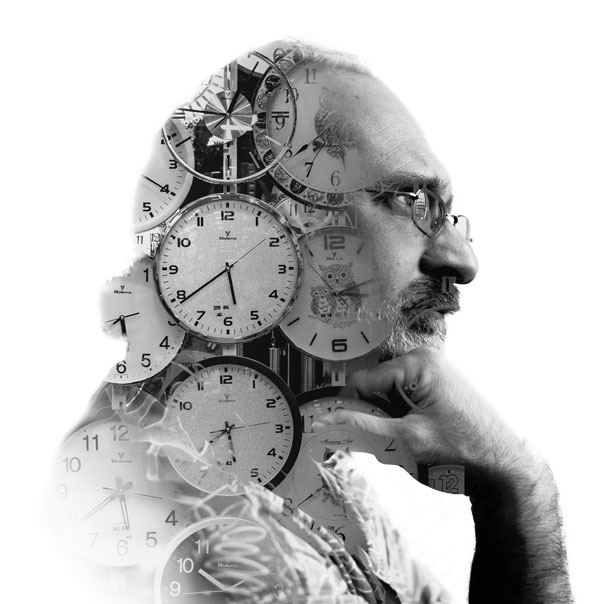
Time is Squishy
Steven Gimbel, Philosophy professor
The two most important thinkers to consider the nature of time were Isaac Newton and Albert Einstein. Newton thought that time was a thing unto itself. There is mere relative time that we see by comparing processes (like the Earth moving around the sun or a hand moving around the clock) and then there is real or absolute time, the stuff of physics and known to God himself.
Einstein, with his theory of relativity, came to see (through the work of his former college teacher Hermann Minkowski) that space and time were unified into a single four-dimensional space-time manifold or “mollusk,” as Einstein called it. He called it a mollusk because it was squishy. It would bend and twist the way an oyster might if you pushed on it. Time was woven into space, not a separate entity as Newton had thought.
The philosopher J.M.E. McTaggart introduced the distinction between A-series and B-series time, leading to his conclusion that time is illusory. The A-series approaches time like a zipper. The zipper pull represents “the now.” Behind the zipper pull, the zipper is fixed, cemented in place. In front of the zipper pull, the zipper is open—not yet fixed. In the same way, time is set in the past and not yet determined in the future. There is something metaphysically important about “the now,” which travels through time.
B-series is uniform. All time is fixed. We may not know what the future is like, but it is already settled. We may move through time unaware of the future, but time is time. There is no difference between past and future. There is nothing special about the now, other than our psychological connection to it. There is nothing physically or metaphysically distinct about the current moment.
Processes develop and evolve over time. Our best scientific theories give us insight into how it works. Philosophy was thought by Rene´ Descartes to be the queen of the sciences, that is, the foundation on which all science must proceed, or the basis for its truth. But the opposite is true. Philosophy doesn’t begin until science provides us with a supported theory. Then the philosopher can begin trying to figure out what the theory means.
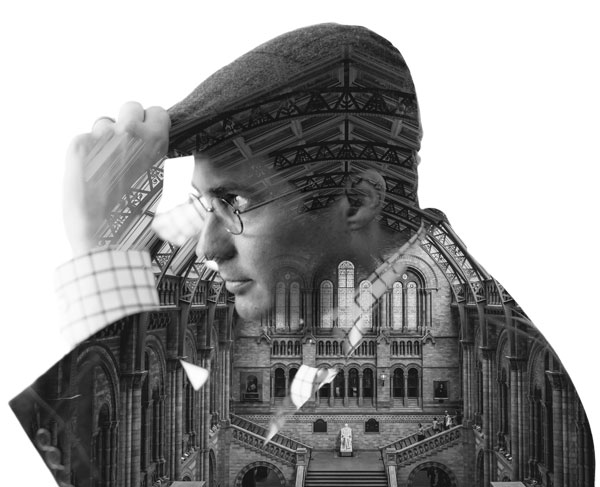
Time is a Guidepost
Ian Isherwood ’00, History and Civil War Era Studies professor
Time is very important for historians in both an abstract sense as well as a practical one. We rely on the concept of time to benchmark historical events—to establish chronology and narratives of the past—and to conceptualize eras that have certain characteristics.
For historians, we constantly re-evaluate the ways in which we see the past by challenging older interpretations and in helping to make history more relevant through new interpretations. Part of that work is looking at certain periods of time and seeing what stories exist that run against certain popular perceptions of the past.
It is important for historians to organize the past according to chronology and specific dates, times, etc., but I wouldn’t say that this work is more important than how time is understood and used by a physicist, astronomer, or philosopher. For us, time is a tool for organizing the way we see the past.
Time doesn’t have that much of an influence. The way people lived, thought, debated, discussed, fought, cared for, believed in, and struggled with their human existence—that’s what is really important to us in understanding our lives. Time helps us place the people of the past—their thoughts and deeds—into context.

Time is Relative
Jacquelynne Milingo, Physics and astronomy professor
Galileo and Newton assumed that time is absolute and universal (everyone tells the same time at the same time), but Einstein showed us this is not the case. The time between two events depends on who is wearing the watch and how the person wearing the watch is moving.
More specifically, the idea that “time is relative” means that the span of time between two events can be different for different observers depending on how they are moving with respect to those events.
Observer-dependent time isn’t something we notice in our everyday lives. We simply move too slowly through the world—much slower than the speed of light—for it to be noticeable, but there are many situations in the study and application of modern physics and astrophysics that require us to pay attention to these differences in how we measure time.
The “twin paradox” is a well-known conceptual exercise in time dilation. This paradox is a thought exercise that imagines two identical twins. One travels to space at high speeds and returns to find his twin has aged more than he has. This effect has also been experimentally measured and confirmed on Earth.
Gravity also influences the passage of time; clocks closer to a massive object will tick more slowly than clocks farther away. GPS satellites, which orbit at altitudes of 20,000 km above Earth, require nanosecond precision timekeeping and have to be corrected for this general relativistic effect to operate reliably.
Einstein visualized the three dimensions of space and the one dimension of time like a continually evolving fabric that could warp and be distorted by mass; physicists refer to this as “space-time.” It’s hard to picture, but imagine a two-dimensional representation as being like a rubber sheet. Any mass placed on that rubber sheet will create an indentation that other masses will respond to as they pass nearby, like a golf ball responding to dips on a green. Mass bends space-time, and the curvature of space-time directs how mass and light move in response.
Although this isn’t something we necessarily notice in our everyday lives, to have precise predictive and descriptive power about the universe on the largest scales, we have to consider the dynamic interaction between matter, energy, the geometry of space, and time. The effects of general relativity have been observed and confirmed even on smaller scales and with modest (astronomically speaking) masses.
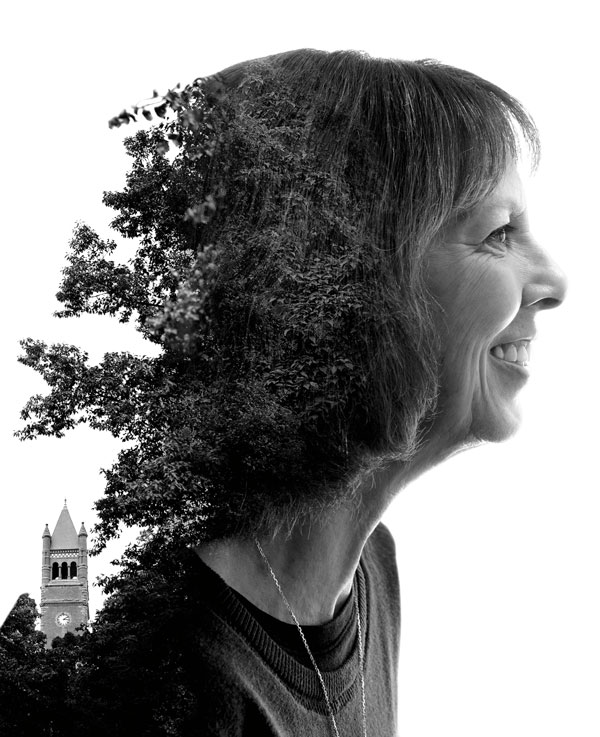
Time is a Valuable Resource
Janet Morgan Riggs, ’77 President
What does time mean to a college president? It’s a valuable resource that runs out too quickly! There seems never to be enough time for the tasks to be done, never enough time for planning or reflection. Days, weeks, and months speed by. There is an adage that says, “Time flies when you’re having fun!” Well, I must be having a lot of fun!
But there is another perspective on time that goes with a college presidency—and that relates to the long arc of the College’s evolution. Although the 11 years of my presidency make up just a small piece of the College’s 187-year history, I have felt great responsibility for this slice of time in the College’s lifespan—for building on a strong past, but most importantly, for setting the stage for a bright future.
So, what is time?
As beauty is in the eye of the beholder, perhaps so is time. Ian Clarke—an English professor, director of Hatter Planetarium, and the creator of the show about time— said, “I don’t have an answer. We all deal with the concept of time very effectively in our everyday lives; yet, there is no universal, multidisciplinary definition of it, which makes it an excellent topic for a planetarium show.” Time is...slippery. Time is...ubiquitous. It moves. It shakes. It provides context and content to our human lives, while remaining amorphous. Time is a mystery—one well worth exploring.